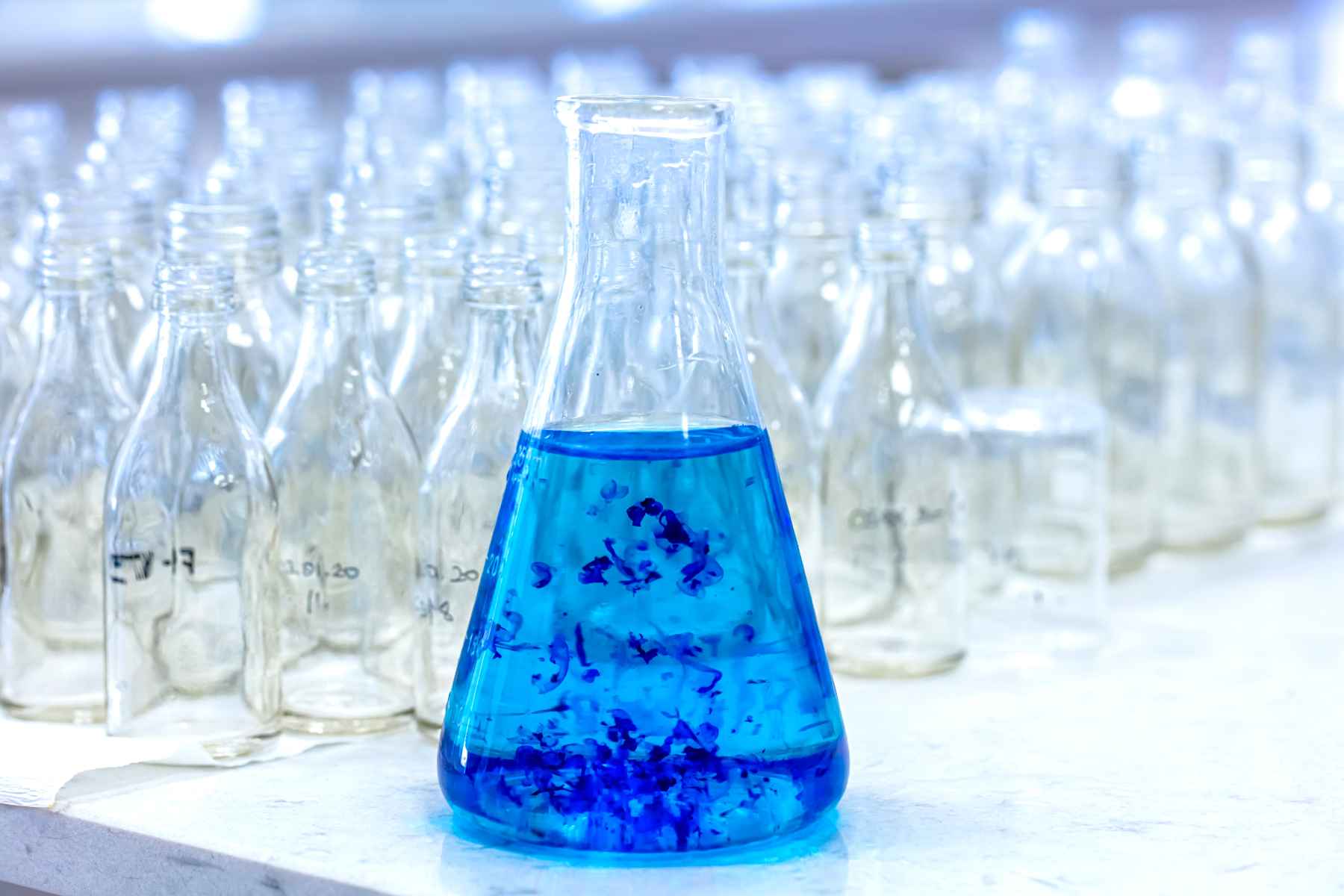I remember attending Dave Asprey’s biohacking conference and noticing that many attendees had blue tongues. It felt like an inside joke I wasn’t part of yet, and my curiosity took over. People walked around with their tongues stained blue, energized, focused, and clearly in on something I wasn’t. I kept thinking, “What’s going on here?”
Then, at the Biohacker Summit in Helsinki, I saw the same thing, more people using this mysterious blue substance. I had to find out what it was all about. That’s when I discovered methylene blue (MB). The more I researched, the more intrigued I became. I bought some troches from Troscriptions but didn’t commit to a routine right away. I tried it a few times without understanding the full potential of what I had in my hands.
The turning point came when I met Dr. John Lieurance, a leading expert in MB. We had crossed paths briefly at another Dave Asprey event, but it was in Helsinki that I connected with him. Dr. Lieurance, a Chiropractic Neurologist and Naturopathic Physician, has spent years exploring MB’s therapeutic applications. His book, Methylene Blue: Magic Bullet, opened my eyes to the ways MB supports mitochondrial health, boosts energy, and combats infections. Hearing him speak in person made me realize just how powerful MB could be.

After that, I got serious about experimenting with Just Blue, Troscriptions’ pure methylene blue product. I began noticing subtle changes, better focus, improved energy, and a more balanced mood. It wasn’t an overnight transformation, but with consistent use, I felt more “on.” My brain fog lifted, and I found I had the endurance to power through long workdays without feeling drained. I also appreciated how simple the product was, just a small troche to dissolve in my cheek. No complicated protocols or unpleasant tastes (though it does leave your tongue blue!).
Meeting Dr. Lieurance gave me the confidence to explore MB further. He introduced me to the concept of cycling the supplement, ten days on, ten days off, and explained how this approach helps maintain balance in the body. He even recommended eyedrops infused with methylene blue to stimulate the pineal gland, which plays a role in regulating sleep and mood.
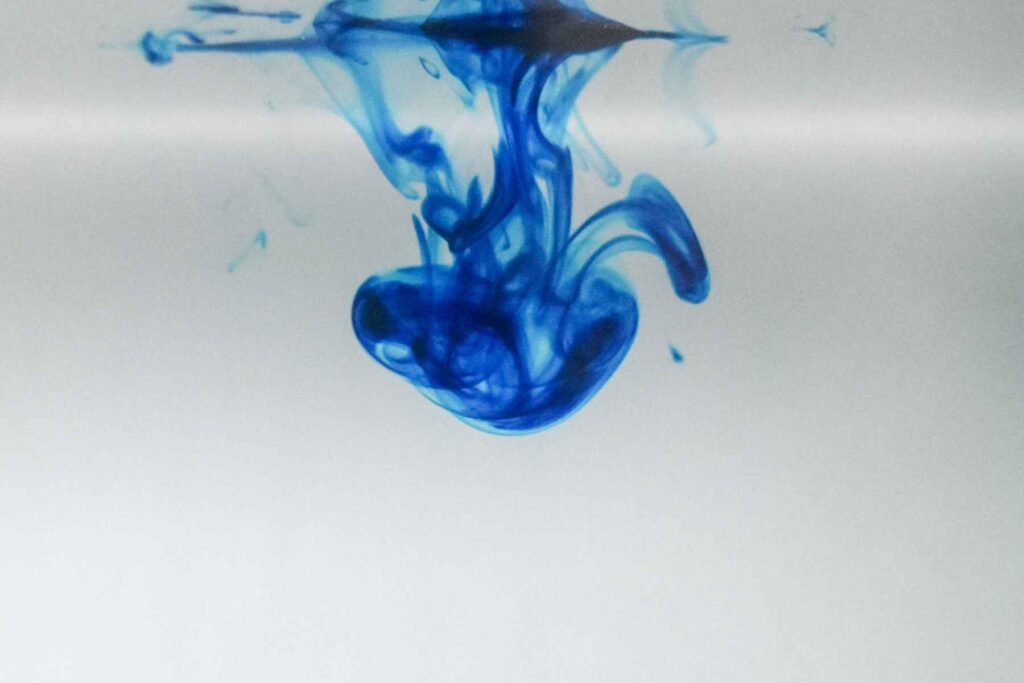
What is Methylene Blue? A Brief History and Overview
Methylene blue has a fascinating history that goes all the way back to 1876, when it was first synthesized by a German chemist named Heinrich Caro. It started its life not as a health supplement but as a synthetic dye used for coloring textiles.
Its medical journey began in the early 20th century, when scientists discovered that methylene blue could be used to treat malaria. This was a major breakthrough at the time, as malaria was one of the deadliest diseases in the world. MB worked by interfering with the parasite’s metabolic pathways, effectively killing it. Though other treatments have since taken over, MB is still recognized as an effective tool in malaria treatment today, especially in regions where the disease remains endemic.
Beyond malaria, MB has also been used to treat urinary tract infections and as a diagnostic tool. You might have even encountered it in medical settings without realizing it. Hospitals frequently use MB for treating methemoglobinemia, a condition where the blood cannot carry oxygen effectively. In emergency situations, doctors administer MB intravenously to reverse this life-threatening condition. The compound is also helpful in cases of ifosfamide-induced encephalopathy, a rare but serious side effect of chemotherapy.
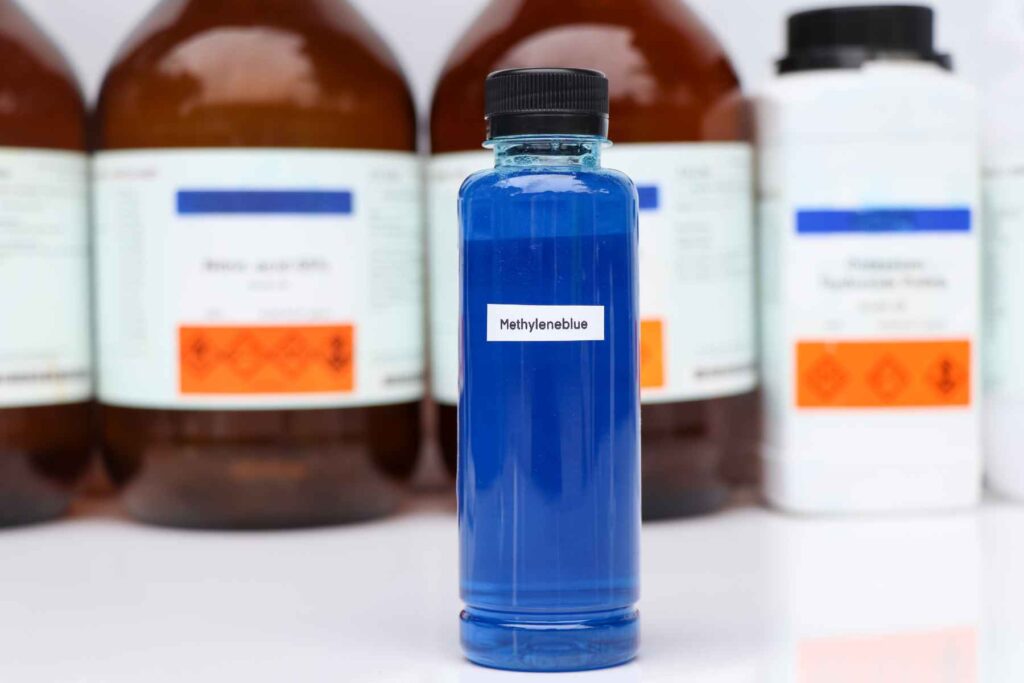
What’s interesting is how MB has evolved from a purely medical treatment into a biohacking tool. In recent years, it has gained popularity for its role in supporting mitochondrial function. Your mitochondria are the energy powerhouses of your cells, and when they work efficiently, you feel more energized and focused. MB helps by facilitating the production of ATP (adenosine triphosphate), the molecule your cells use for energy. This makes it especially appealing to people looking to enhance their cognitive abilities, fight fatigue, and maintain long-term health.
The biohacking community has embraced MB not just for its energy-boosting properties but also for its neuroprotective effects. Studies suggest that MB may help protect the brain from oxidative stress, which is linked to conditions like Alzheimer’s disease and Parkinson’s disease. There’s even evidence that it could play a role in preventing or treating depression and anxiety by influencing serotonin levels. This is why some experts recommend caution when combining MB with SSRIs or other medications that affect serotonin, as it could potentially lead to serotonin syndrome.
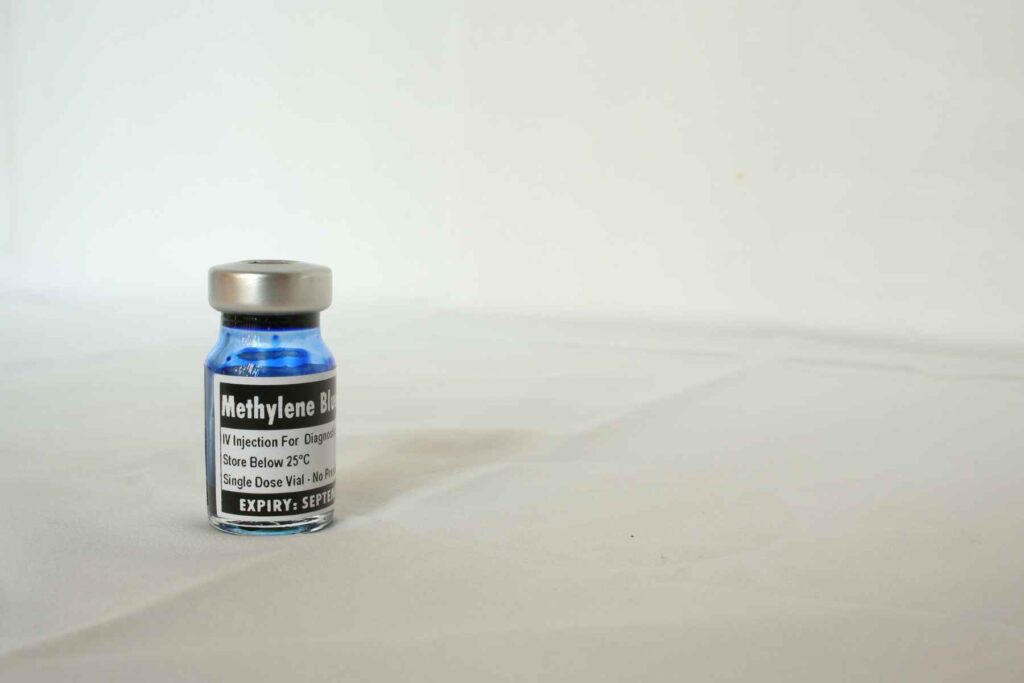
Another fascinating aspect of MB is its impact on infections. It’s been used as an antiviral and antibacterial agent, and some studies suggest it could help combat post-COVID symptoms. Personally, I’ve found it useful as part of my strategy to stay proactive against infections, especially during cold and flu season. It’s like having an extra layer of defense for your immune system.
These days, methylene blue is available in various forms—IV treatments, troches, pills, and even eyedrops. For those who want the benefits without the blue-stained tongue, there are capsule options.
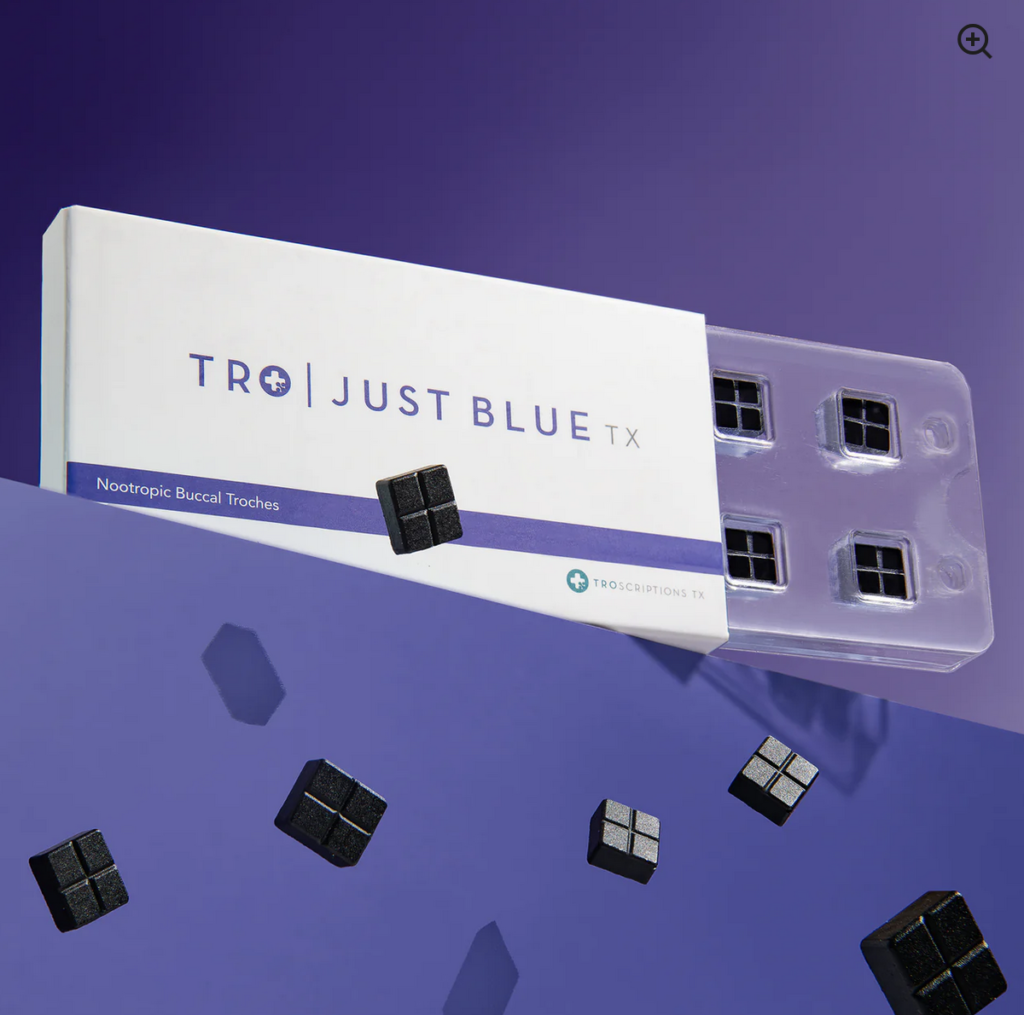
My Experience with Methylene Blue: A Personal Perspective
I decided to start with Troscriptions Just Blue, a product specifically designed to optimize energy and focus. At first, I wasn’t sure how much to take or how often. Finding the right dosage took some time. I began with half a troche, as recommended, and gradually adjusted based on how I felt.
Using MB was like flipping a switch in my brain. The fog that sometimes clouded my thoughts began to clear, and I found it easier to stay focused throughout the day. My energy felt more stable, and mood-wise, there was a noticeable lift—I felt lighter, more optimistic, and, at times, almost euphoric in the best possible way.
Of course, there were a few quirks. One of the most obvious ones is the blue stain it leaves on your tongue. It’s not a big deal, but if you’re going to a meeting or out in public, it’s something to be mindful of. I found that placing the troche towards the back of the tongue helped reduce staining. There are also capsule forms of methylene blue available, but I prefer the buccal troches because of the faster absorption and noticeable effects.

Other Innovative Uses of Methylene Blue
The biohacking world is always pushing boundaries, and methylene blue has found its way into some exciting new applications beyond traditional methods.
Suppositories, Nasal Sprays, and Eyedrops
Some people prefer suppositories for deeper absorption, especially when targeting specific health concerns. Nasal sprays are another interesting option, often used to deliver MB directly into the bloodstream through the nasal mucosa. And then there are the eyedrops, a method that Dr. John Lieurance highly recommends. I’ve tried these drops myself, and they offer a unique way to enhance mental clarity, especially when combined with morning sunlight exposure.
Dr. Lieurance’s Eyedrop Protocol with Sunlight Exposure
One of the most intriguing uses of MB comes from Dr. Lieurance’s protocol involving MB eyedrops and watching the sunrise. According to him, this combination helps activate the pineal gland, which is responsible for regulating sleep-wake cycles and mood. I’ve tried this a few times, and while the effects are subtle, they’re noticeable. It’s a refreshing way to start the day, and it leaves me feeling grounded and mentally sharp.

Enhancing Meditative States and Cognitive Clarity
Many biohackers, myself included, have noticed that MB seems to have an interesting effect on the mind. It’s not just about focus, it can also create a subtle shift in consciousness. I’ve found that taking MB before meditation allows me to enter a deeper, more connected state. It’s almost like it opens a mental door, making it easier to quiet the mind and access a sense of clarity. This effect has made MB a popular tool for those seeking to enhance their meditative practices.
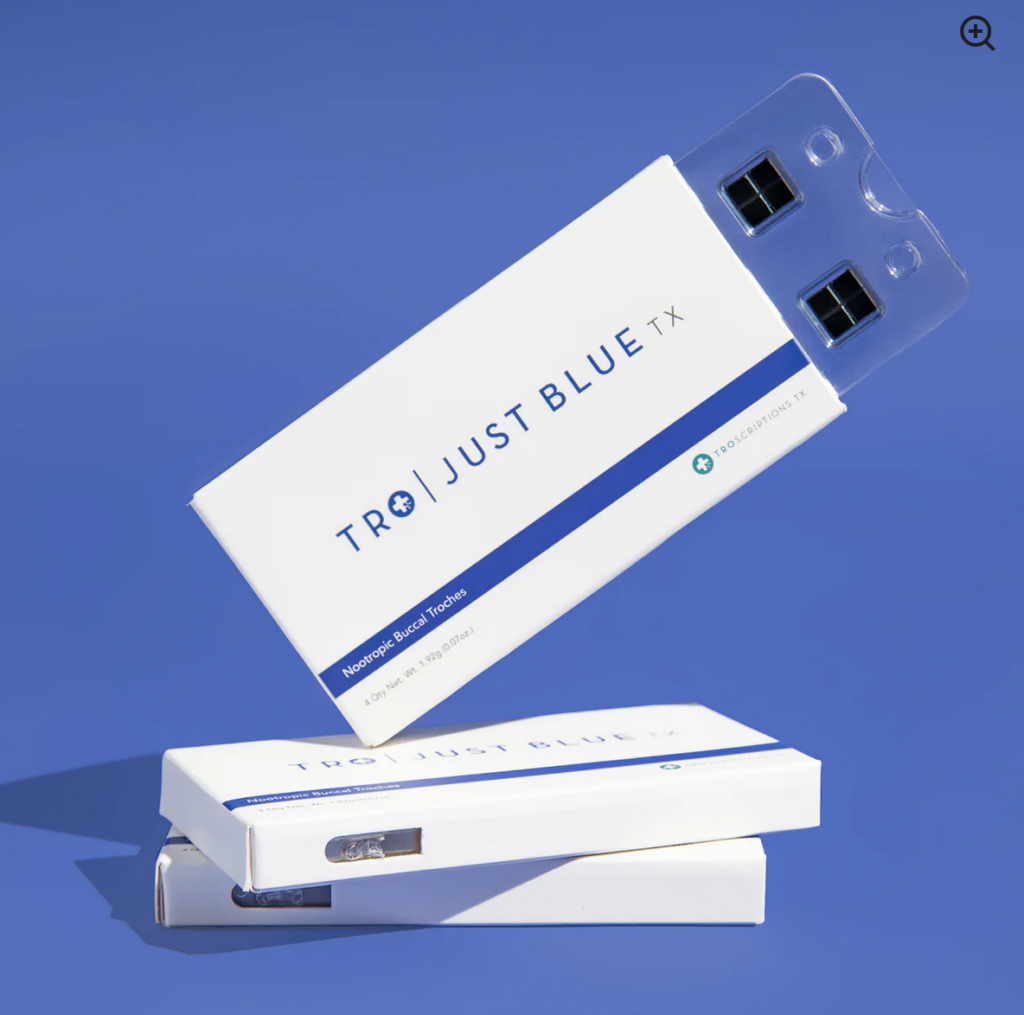
Advice for Those Considering Methylene Blue
If you’re curious about trying methylene blue (MB), my advice is to start with trusted sources. Personally, I recommend Troscriptions’ Just Blue troches. Their commitment to beyond USP-grade ingredients ensures you’re getting a high-quality product with rigorous testing for purity and potency. I’ve also explored other reputable sources, like the products Dr. John Lieurance offers, but Troscriptions remains my go-to. Their buccal delivery method is convenient, effective, and reliable.
Dosage and Cycling Protocols
Finding the right dosage is essential. In my experience, starting with half a troche is a good way to ease into it. Everyone’s body responds differently, so it’s important to pay attention to how you feel and adjust the amount accordingly. Cycling MB is also key to getting the most out of it. A ten days on, ten days off schedule works well for me. This not only helps prevent overuse but also ensures that the body stays responsive to the supplement over time.
Start Small and Monitor Your Response
When it comes to MB, more isn’t always better. I recommend starting with half a troche (as Troscriptions suggests) and paying close attention to how your body reacts. Everyone’s system is different, and finding the right dose can take some trial and error. Start slow, notice how you feel, and increase only if necessary. The goal isn’t just to take MB but to understand how it benefits you specifically.

Side Effects and Warnings
While MB has many benefits, it’s important to be aware of potential side effects. Some are minor, but others can be more serious, especially if you’re taking certain medications or have specific health conditions. A few common side effects you might notice include dizziness, nausea, and blue urine. The blue urine is harmless, but it can be a bit surprising the first time you experience it. These side effects are usually mild and temporary, especially when you stick to the recommended doses.
Serious Risks: Serotonin Toxicity
If you’re taking medications like SSRIs, MAOIs, or TCAs, be cautious. MB affects serotonin levels, and combining it with these drugs can cause serotonin toxicity, a serious condition that requires medical attention. This is why it’s essential to consult with a healthcare provider before starting MB, especially if you’re on any medications that influence serotonin.

G6PD Deficiency and Hemolytic Anemia
As mentioned earlier, G6PD deficiency is a condition that makes MB unsafe for certain individuals. If you have this deficiency, taking MB could trigger hemolytic anemia, a condition where red blood cells break down faster than they can be replaced. It’s crucial to know your G6PD status before starting MB to avoid any potential risks.
Consult a Healthcare Provider
Even though MB is available without a prescription, it’s always a good idea to talk to a healthcare provider before starting. They can help you determine the right dosage, rule out any contraindications, and ensure that it’s safe for you to use MB, especially if you have pre-existing conditions or are on medications.

Conclusion
Incorporating methylene blue has been a game-changer for my health. It’s like my secret weapon, helping me stay focused, energized, and in a better mood, all without feeling forced. It’s not just about getting through the day; it’s about actually feeling good while doing it.
What I love most is how it works on a deeper level, supporting my body from the inside out. Meeting Dr. John Lieurance gave me the confidence to dive in and trust the process. His depth of knowledge and experience reassured me, and with Just Blue from Troscriptions, I know I’m using a high-quality product.
If you’re curious about trying MB, start small, stay patient, and pay attention to how it feels. It’s not a magic pill, but with consistent use and the right routine, it can make a real difference.
Sign up to MitoZen club here for 5% discount off your membership.

Frequently Asked Questions
Methylene blue is a medication initially developed in the 19th century as a synthetic dye. Over time, its therapeutic properties became widely recognized, and it’s now used for various medical conditions. Methylene blue may be used to treat methemoglobinemia, a condition in which hemoglobin can’t properly carry oxygen throughout the body. In clinical settings, administration of methylene blue through injection is often the most effective method for quickly reversing methemoglobinemia. It’s also being explored as a treatment option in refractory shock and septic shock due to its ability to inhibit guanylate cyclase, which helps regulate blood pressure through vasoconstriction of smooth muscle.
The beneficial effects of methylene blue go beyond emergency medicine. MB also shows neuroprotective properties, which make it valuable for treating neurological disorders. Clinical trials are exploring its potential for helping cancer patients and those with Alzheimer’s disease or traumatic brain injuries. Methylene blue’s ability to reduce oxidative stress by promoting the oxidized form of hemoglobin helps in managing degenerative brain conditions. Additionally, methylene blue use in biohacking focuses on enhancing mitochondrial function, which can lead to better energy levels, improved mood, and enhanced cognitive clarity.
Yes, methylene blue has been studied for use in patients undergoing coronary artery bypass surgery. Its ability to act on vascular smooth muscle and regulate nitric oxide makes it useful in managing vasoplegic syndromes, where blood vessels lose their tone and fail to constrict properly. It has also shown promise in treating respiratory distress associated with certain conditions by improving oxygen transport in the blood. However, MB is not a standard treatment for chronic respiratory diseases and should only be used under the supervision of a healthcare provider.
Methylene blue is administered in different doses depending on the intended use. A standard dose of 2 mg/kg is typically used for treating methemoglobinemia. However, MB also carries risks, especially when not used correctly. Common side effects include nausea, dizziness, diaphoresis (excessive sweating), and hyperbilirubinemia. More serious side effects can occur when methylene blue interacts with medications such as SSRIs, MAOIs, or TCAs, leading to serotonergic toxicity (also known as serotonin syndrome). It’s crucial to consult a healthcare provider for proper dosing guidelines and to avoid adverse effects.
Methylene blue is not safe for individuals with glucose-6-phosphate dehydrogenase (G6PD) deficiency. For those with this condition, methylene blue can cause hemolytic anemia, where red blood cells are destroyed faster than they can be replaced. Additionally, patients receiving methylene blue during procedures such as parathyroidectomy should be closely monitored, as it may interfere with the parathyroid glands. Methylene blue use in pregnancy should also be approached with caution, particularly during procedures like amniocentesis in twin pregnancies, where it could potentially identify abnormal tissue but also carry risks.
In the biohacking space, methylene blue has become popular for more than just medical use. Biohackers often experiment with nasal sprays, eyedrops, and suppositories containing MB. These delivery methods bypass the digestive system for quicker absorption, allowing for faster cognitive benefits. Some users report enhanced focus and mental clarity within 5 to 30 minutes following methylene blue use. Additionally, Dr. John Lieurance has developed protocols using MB-based eyedrops in combination with sunrise exposure to activate the pineal gland, potentially improving mood and sleep cycles.
The oxidized form of methylene blue is excreted through urine, which often results in a temporary blue or green tint. This is entirely harmless and indicates that the compound is being properly processed by the body. In fact, some biohackers see this as a fun side effect, a sign that MB is actively working in the system. Methylene blue may also have detoxifying effects on the bladder and gallbladder, which can contribute to better urinary health over time.
Yes, research on MB is ongoing, particularly in areas related to neuroprotection, cancer treatment, and mitochondrial support. Several chapters and articles on ScienceDirect topics discuss the potential uses of MB for oxidative stress management and improving cellular function. Ongoing clinical trials aim to explore its benefits further, particularly for falciparum malaria and intestinal atresia. Researchers are also investigating methylene blue’s potential in preventing serotonergic toxicity when combined with psychiatric medications.
If you’re considering MB, it’s best to start with a low dose, such as half a troche from a reputable company like Troscriptions. Monitor your response carefully and consult with a healthcare provider, especially if you’re on medications or have underlying health conditions. Cycling MB—using it for a set period (e.g., ten days) followed by a break—can help your body remain responsive to its benefits. Always use MB mindfully, integrating it into a broader wellness protocol that supports your overall health.

With a positive approach and a motivation mindset, you will reach your health goals, no matter how hard they may seem at first. Learn more about my one-on-one coaching program here.
